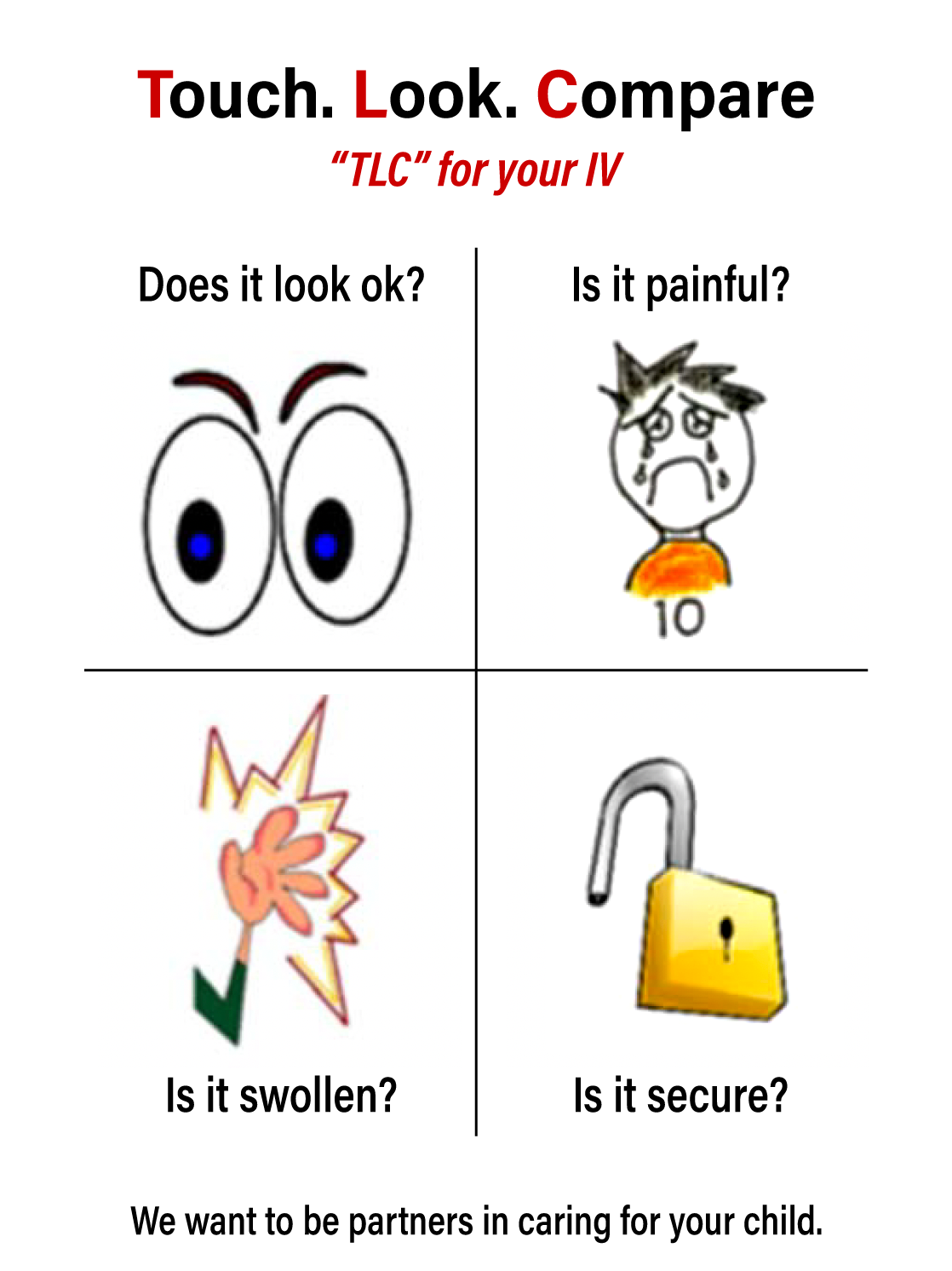Studies Indicate Parent and Patient Education Reduces Patient Harm
The Heartbreak of Infiltration
An ultrasound at 33-weeks of pregnancy alerted a family to a congenital heart defect in their child that would require surgery within days of her birth. During her hospital stay, the infant experienced an IV infiltrate that leaked either lipids or insulin out of the vein and into the baby’s right foot, causing severe pain each time the dressing was changed. Long-term repercussions include possible permanent disfigurement and scarring. The lesson? Parents and patients need to be educated about IV therapy and the early warning signs of complications so they can spot changes and communicate with the health care team1 to prevent injury.
In this case, the patient experienced scarring due to the IV infiltration. In other instances, patients have experienced more serious complications, including amputation. That’s why parent, family, and patient education is integral to reducing patient harm. Especially in the case of children or those who are seriously ill and cannot speak for themselves, parents and family members should be empowered to advocate for the patient and become their voice in the health care environment.
The Importance of Parent/Patient Education
The most recent INS Infusion Therapy Standards of Practice recommends educating patients and their caregivers with age-appropriate messages to address the goals of IV therapy, signs of adverse reactions to medication, and warning signs of IV therapy complications. (Standard 2, Standard 8) Many hospitals have had success reducing patient harm by implementing IV therapy education programs that show assessment techniques and explain signs of complications.
Early detection and quick intervention to a peripheral IV infiltrate are imperative to preventing patient harm. Standardizing IV therapy practices, including creating intervention bundles, ensures that each patient’s IV is started and secured in the same manner. This consistency allows nurses, patients, and their families to discuss best practices for IV therapy maintenance and assessment.
The Power of Acronyms and Mnemonic Devices
Parents, patients, and other caregivers do not have medical expertise. Breaking visual and manual assessment techniques into easy-to-learn steps and using memory aids can be useful in a parent/patient education program.
In one hospital, families were also educated about the warning signs of IV therapy complications using the TLC mnemonic device (see below). Visual aids were hung in patient rooms to reinforce the message.2


TLC: Touch, Look, and Compare
Originally developed by a large pediatric hospital, I.V. House has adopted the Touch, Look, and Compare process to provide nurses with a memorable method for evaluating a patient’s IV insertion site.3 This mnemonic device can be shared with patients and their family members so they can advocate for themselves if something seems off.
Touch: | IV insertion site should feel soft, warm, dry, and pain-free |
Look: | IV insertion site should be uncovered, dry, and without redness |
Compare: | IV insertion site and surrounding area should be the same size as the opposite extremity and without swelling |
The clear plastic dome on the I.V. House UltraDome® and I.V. House UltraDressing® and see-through openings on the TLC® Splint, available for the wrist, elbow, and foot, allow for fast, easy visual and manual assessment of the IV insertion site and the surrounding tissue. This allows nurses, patients, and their family members to inspect the IV site without removing the devices, making the Touch, Look, and Compare method easier to implement.
Useful Educational Material
Parents and other family members try to participate in the care of the patient by looking for information about the disease and treatment options, as well as learning useful technical skills. Educational booklets, brochures, and signage can empower family members to become proactive members of the health care team in the prevention of peripheral IV injuries. The National Patient Safety Program (NPSP) in Brazil understood that educating parents and family members in the early identification of complications associated with peripheral IVs could help reduce harm. The NPSP created an informative booklet using simple language to define peripheral venipuncture and outline techniques for the prevention and early identification of IV therapy complications. According to a study, the book was an effective tool in helping parents identify adverse events that had not been discovered yet by health care professionals.4
Conclusion
During times of crisis, many family members take a step back to let health care professionals do what needs to be done to nurse their loved ones back to health. This can lead to a patient or family member remaining silent when something seems wrong. Other times parents and patients will plug symptoms into a search engine and come up with wildly inaccurate diagnoses. The best way to combat misinformation is to arm patients and their loved ones with information about signs and symptoms that something is going awry with an IV catheter. The result is that patients and their loved ones become effective members of the hospital’s caregiving team in spotting early warning signs of IV therapy complications.
SOURCES
- Everly’s Intravenous Infiltration Journey, Backe, L., Journal of the Association for Vascular Access. 2019, Volume 24, No. 2
- S.T.I.C.K.: A Quality Improvement Pediatric IV Infiltration Prevention Bundle Watterson et al., Journal of Pediatric Nursing, 2018, Volume 41, p. 38-41
- Cincinnati Children’s Hospital Medical Center, TLC For Safety Touch, Look and Compare poster
- Construction and validation of a family guidance manual on complications of intravenous therapy in children, Santos et al., Revista Brasileira de Enfermagem, 2021
